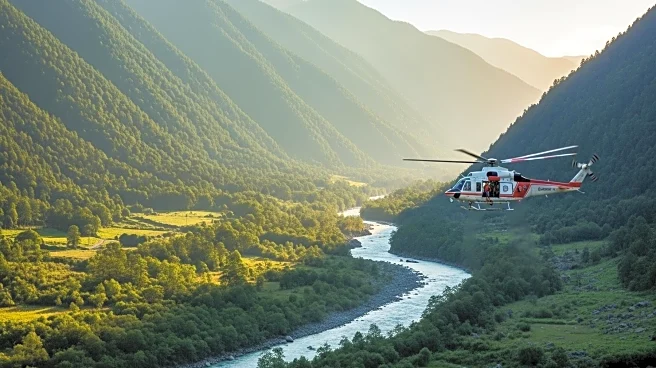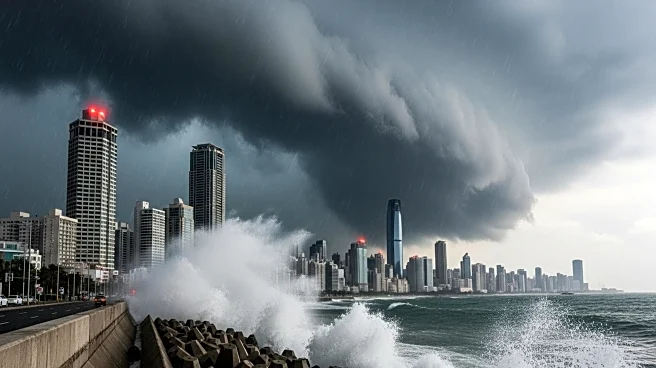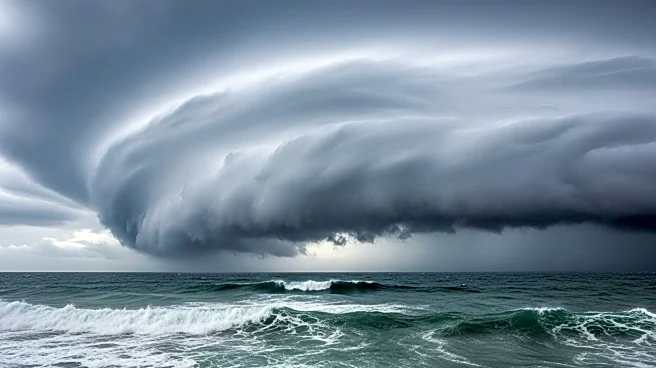What's Happening?
A typhoon has struck a chain of Japanese islands located south of Tokyo, bringing with it heavy rainfall and prompting government warnings for potential landslides and flooding. The Izu island chain, situated approximately 280 kilometers (174 miles) from the Japanese capital, has experienced record rainfall, according to the Kyodo news agency. In response to the severe weather conditions, hundreds of residents have sought refuge in evacuation centers. Tragically, one man lost his life after being swept away by waves while fishing in Oiso, Kanagawa prefecture, on the main island of Honshu.
Why It's Important?
The impact of the typhoon highlights the vulnerability of Japan's island regions to extreme weather events, which are becoming increasingly frequent and severe due to climate change. The heavy rainfall and potential for landslides pose significant risks to infrastructure and public safety, necessitating swift government response and community preparedness. The loss of life underscores the urgent need for effective disaster management strategies to protect residents in affected areas. Additionally, the economic implications of such natural disasters can be profound, affecting local economies and requiring substantial recovery efforts.
What's Next?
As the typhoon continues to affect the region, authorities are likely to maintain evacuation orders and monitor the situation closely to prevent further casualties and damage. The government may also implement additional safety measures and provide support to affected communities. In the longer term, Japan may need to reassess its disaster preparedness and response strategies to better cope with the increasing frequency of such extreme weather events.
Beyond the Headlines
The occurrence of this typhoon raises broader questions about climate resilience and the need for sustainable infrastructure development in Japan. As climate change continues to influence weather patterns, there is a growing imperative for countries to invest in adaptive measures that can mitigate the impact of natural disasters. This event may also prompt discussions on international cooperation in addressing climate-related challenges and sharing best practices for disaster risk reduction.













